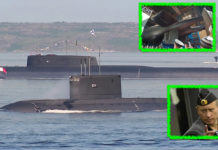 KAZAKHSTAN – Astana. 22/05/14. Sulla testata Astana Times, nella sessione opinioni, il 20 maggio è uscito un articolo a firma, Samat Ordabayev, Viceministro per gli Affari Esteri del Kazakhstan, dal titolo: «Costruire Unione Eurasiatica economica sul consenso, rispetto reciproco e benefici».
KAZAKHSTAN – Astana. 22/05/14. Sulla testata Astana Times, nella sessione opinioni, il 20 maggio è uscito un articolo a firma, Samat Ordabayev, Viceministro per gli Affari Esteri del Kazakhstan, dal titolo: «Costruire Unione Eurasiatica economica sul consenso, rispetto reciproco e benefici».
Secondo il Viceministro, la nascita dell’Unione Euroasiatica economica è una naturale conseguenza, un azione “obbligatoria” per affrontare la crisi economica mondiale e per essere più competitivi sui mercati internazionali. «Senza negare l’importanza dei fattori culturali e di civiltà, il nostro Presidente ha proposto un processo di integrazione basata principalmente sul pragmatismo economico. “Di interesse economico, piuttosto che le idee geopolitiche astratte e slogan, è il motore principale dei processi di integrazione”» si legge sulla testata. Una esortazione dunque a trasformare una iniziatica come la CSI dopo 20 anni che ha dato comunque i suoi frutti, vedi l’Unione doganale, e lo Spazio economico comune della Bielorussia, Kazakhstan, Russia a fare un passo ulteriore. «La prima fase di integrazione economica è stata la creazione di una zona di libero scambio. Ci sono voluti due decenni per raggiungere un accordo sul documento internazionale multilaterale che istituisce una zona di commercio di CSI. E fu solo nel 2011 che otto dei paesi della CSI hanno attuato l’accordo. La seconda fase di integrazione economica è stata la creazione dell’Unione doganale. La decisione di intraprendere questa strada è stata fatta in un vertice informale di Stati membri EurAsEC nel 2006, ma non è stato attuata fino al 1 gennaio 2010 […]. Il 6 luglio 2010, il Codice doganale dell’Unione doganale è entrato in vigore. A partire dal primo luglio 2011 sono state abbattute le frontiere doganali interne tra i tre stati». Scrive Ordabayev. Nel 2013 il fatturato intrastati è cresciuto raggiungendo i 64,1 bilioni di dollari. Adesso per il viceministro è dunque maturato tempo di fare un ulteriore passo in avanti, con la creazione dell’Unione Euroasiatica economica. «La prossima fase dell’integrazione aiuterà a realizzare il pieno potenziale della Unione doganale e lo spazio economico comune, rafforzando e migliorando il quadro giuridico, le istituzioni e la cooperazione pratica nei seguenti settori: Garantire l’efficace funzionamento del mercato comune dei beni, dei servizi , dei capitali e del lavoro; La formazione di un coerente industriale, dei trasporti, dell’energia e della politica agricola, e l’approfondimento della cooperazione industriale, compresa l’ eventuale creazione di imprese transnazionali comuni». E poi aggiunge: «I leader dei tre paesi hanno espresso l’obiettivo di completare la codificazione dei trattati internazionali sul quadro giuridico dell’Unione doganale e dello spazio economico comune, questa è la base per creare una Unione economica eurasiatica, entro il 1 gennaio 2015. Per raggiungere questo obiettivo bisogna raggiungere una intesa su: Sostenibilità dei fattori macroeconomico, fiscale e politica della concorrenza: adottare riforme dei mercati del lavoro, dei capitali, dei beni e dei servizi; La creazione di reti eurasiatiche nei settori dell’energia, dei trasporti e delle telecomunicazioni. I capi delle tre stati inoltre hanno sottolineato come altri Stati, che condividono gli obiettivi e i principi dell’Unione e sono pronti per la loro attuazione, possono aderire all’organizzazione, in qualsiasi fase del processo». Ma qualis ono in sostanza i vantaggi del’Unione? «In primo luogo , non stiamo parlando della ricreazione dell’Unione Sovietica in qualsiasi forma. Sarebbe ingenuo cercare di ripristinare o copiare ciò che è già nel passato. Ma la stretta integrazione sulla base dei nostri nuovi valori economici è indispensabile. [..] In questo modo saremo in grado di diventare una delle forze economiche del mondo moderno e di agire come un efficace collegamento tra l’Europa e la dinamica regione Asia-Pacifico». La creazione di una regione Euroasiatica dunque nelle intenzioni del Kazakhstan dovrà diventare un nuovo attore economico competitivo nel panorama mondiale. Un attore in grado di confrontarsi direttamente «con l’Unione europea, gli Stati Uniti, Cina e APEC, al fine di garantire la sostenibilità dello sviluppo globale». Inoltre, secondo obiettivo dell’Unione, far confluire le strutture sovranazionali esistenti (Unione doganale, spazio economico comune) in un unico contenitore. Terzo, ma di certo non ultimo rendere i confini liquidi, in modo da far entrare altri partner nell’Unione con un occhio di riguardo all’Unione Europea.
A seguire testo originale dell’articolo pubblicato sulla rivista Astana Times.
Building Eurasian Economic Union on Consensus, Mutual Respect and Benefit
BY SAMAT ORDABAYEV in OPINIONS on 20 MAY
Kazakhstan has been one of the main initiators of Eurasian integration. The idea and necessity of creating the Eurasian Union was first expressed by the President of our country, Nursultan Nazarbayev, in 1994. In a speech at the Lomonosov Moscow State University, the Kazakh leader made a direct appeal to the intellectual elite of the Commonwealth of Independent States to withdraw from the “stupor” of the multilateral integration process, which had stalled in the two years following the establishment of the CIS. Nursultan Nazarbayev told the audience: “the CIS does not meet the objective requirements of our time and does not deliver integration for the participating countries, which is an urgent need for our nations. Therefore, there is a need for a new interstate association, which would operate on clear principles.”
Without denying the importance of cultural and civilisational factors, our President proposed a process of integration based primarily on economic pragmatism. “Economic interest, rather than abstract geopolitical ideas and slogans, is the main engine of the integration processes,” he said then.
This initiative served as the impetus for integration in the CIS. After 20 years, it has helped drive the creation of a number of successful inter-state structures, including the Eurasian Economic Community, the Customs Union and the Common Economic Space of Belarus, Kazakhstan and Russia, among many others.
The first stage of economic integration was the creation of a free trade zone. It took two decades to reach agreement on the multilateral international document establishing such a trade zone in the CIS. And it was only in 2011 that eight of the CIS countries implemented the agreement.
The second stage of economic integration was the creation of the Customs Union. The decision to take this path was made at an informal summit of EurAsEC member states in 2006 but it wasn’t until January 1, 2010 that the Customs Union of three EurAsEC member states – the Republic of Belarus, the Republic of Kazakhstan and the Russian Federation – became a reality. On July 6, 2010, the Customs Code of the Customs Union came into force. On July 1, 2011 internal customs borders between the three states were removed.
Member states of the Customs Union began to cooperate more closely, and there was a significant increase in mutual trade turnover as well as an improvement in performance indicators for economic development.
In 2013, despite the on-going turbulence in the global economy, trade turnover between the three countries increased, reaching $64.1 billion.The structure of bilateral trade has also changed with the share of raw materials in export-import operations declining, while the volume of technological products with high added value has increased.
The implementation of a single customs territory created a single market for goods where there are no tariff and non-tariff barriers. This has given Kazakh products greater access to a larger market. The creation of joint ventures and cooperatives has intensified, new jobs have been created, and the range of social products has expanded.
Business conditions are also improving noticeably. The members of the Customs Union have seen an increase in their rankings in the World Bank’s ‘Ease of Doing Business’ Index.
On January 1, 2012 the Republic of Belarus, the Republic of Kazakhstan and the Russian Federation entered into a new, third stage of integration – the Common Economic Space (CES). The CES was based on 17 international agreements that were developed and adopted by the member states in 2010, all of which entered into force on January 1, 2012.
The free movement of goods, services, capital and labour within the single economic space provides significant potential for the economies of member states.
For Kazakh businesses, the establishment of the CES has allowed them to reduce transactional costs and consequently free up working capital to invest in business development.
Since January 1, 2014, CES states have also introduced changes into their national public procurement regime that enable Kazakh suppliers to participate in state and municipal tenders in Russia and Belarus, on a par with local suppliers.
One of the important functions of the CES is industrial cooperation and the development of agro-industrial complexes. The conceptual agreement for industrial cooperation was made in May 2013, creating an environment for deeper industrial collaboration and the coordination of national industrial policies.
International financial institutions have also praised the effectiveness of the Customs Union and the Common Economic Space.For example, the European Bank for Reconstruction and Development’s “Transition Report 2012” described the formation of the Customs Union and the Common Economic Space as the first successful example of regional integration in the post-Soviet region.
On the eve of launch of the CES in November 2011, the presidents of the Republic of Belarus, the Republic of Kazakhstan and the Russian Federation signed a declaration on Eurasian economic integration. The declaration expressed the firm belief that further integration would serve the interests of all of the member states, helping address common problems, improve the welfare and quality of life for citizens, facilitate sustainable socio-economic development, accelerate modernisation and strengthen each nation’s competitiveness in the global economy.
The presidents of the three countries signaled their ambition to embark on a new stage of integration based on the principles of international law, including a respect for the sovereignty and equality of states, the approval of fundamental human rights and freedoms, the rule of law and the market economy. The next stage in integration will help realise the full potential of the Customs Union and the Common Economic Space, strengthening and improving the legal framework, institutions and practical cooperation in the following areas:
– Ensuring the effective functioning of the common market for goods, services, capital and labour;
– The formation of a coherent industrial, transport, energy and agricultural policy, and the deepening of industrial cooperation, including the possible creation of joint transnational corporations.
The leaders of the three countries expressed the goal to complete the codification of the international treaties on the legal framework of the Customs Union and the Common Economic Space, and on this basis to create a Eurasian Economic Union, by January 1, 2015. Reaching this goal requires agreement on a number of issues, including:
– Sustainable macroeconomic, fiscal and competition policy;
– Structural reforms of labour markets, capital, goods and services;
– The creation of Eurasian networks in the fields of energy, transport and telecommunications.
The heads of the three states also noted that other states, which share the goals and principles of the Union and are ready to implement them, could join the organisation at any stage in the process.
What are the prospects and advantages of the Eurasian Economic Union?
Firstly, we are not talking about the recreation of the Soviet Union in any form. It would be naive to try to restore or copy what is already in the past. But close integration on the basis of our new economic values is imperative.
States parties to the CES can provide a model of a powerful union, capable of becoming one of the economic forces of the modern world and acting as an effective link between Europe and the dynamic Asia-Pacific region.
The accumulation of natural resources, capital, and strong human potential will allow the Eurasian Economic Union to be competitive in the modern international economy. It will allow us to compete for investment in the highly competitive sectors of industry and technology and the production of high value added goods. It will also create a powerful vehicle to work alongside other key players and regional structures, such as the EU, the U.S., China as well as APEC, to ensure the sustainability of global development.
Secondly, the Eurasian Economic Union will serve as the parent organisation for other integration processes. That is to say, the Union will be formed through the merger of existing structures – the Customs Union and the Common Economic Space – simplifying the governance process.
Thirdly, the Eurasian Economic Union is an open project: the participants welcome the accession to the Union of other partners and close cooperation with other existing organisations, such as the EU
Today Kazakhstan is on the path of accelerated industrial and innovative development. A new structure of modern productive forces is being created, building a strong foundation for a future based on an innovation economy. Therefore, it is imperative that the Eurasian Economic Union becomes an environment of innovation that nurtures powerful technological breakthroughs.
Only through integration will our state be competitive in the international arena.
In the course of creating the Eurasian Economic Union, it is essential to develop a legal framework that ensures a voluntary and fair integration process, which provides for the mutual and effective economic development of member states and further promotes our respective countries’ strong positions in the global economy.
The principle of consensus and its practical application to decision-making at all levels, as well as the inadmissibility of political integration, are non-negotiable.
The Union can only become strong and stable if the interests of all states are considered, and if all states are given equal responsibility for economic development.
At the same time, as repeatedly stated by President Nazarbayev, the economy is the sole reason for increased integration. Integration must proceed carefully, grounded in the principles of mutual benefit, equality and evolutionary gradualism and pragmatism, practicality, political sovereignty and the inviolability of member states.
In May 2014, Kazakhstan, Russia and Belarus plan to adopt the treaty on the Eurasian Economic Union and will work together to build a new structure. And while the Union promises to bring great benefits to our respective economies, there should be no doubting that Kazakhstan, Russia and Belarus remain independent states with their own national interests.
The author is Deputy Minister of Foreign Affairs of Kazakhstan.
















